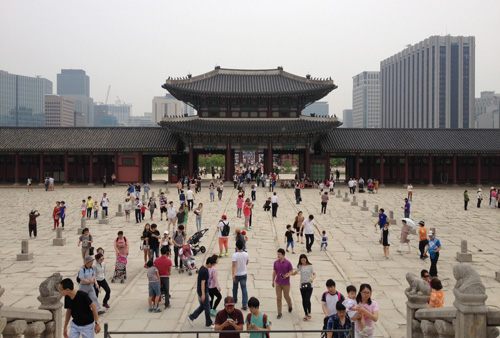
The Gyeongbokgung.
By Michael Banks
Today I was traveling back from Pohang where I spent the weekend after an busy few days in Daejeon.
Daejeon is certainly an impressive place to do science, being home to no fewer than 60 research centres. Unfortunately, in the limited time I had I could only visit a couple, including the Korean Research Institute of Standards and Science and the National Fusion Research Institute (NFRI).
NFRI is home to the KSTAR tokamak – one of the first superconducting tokamaks in the world. Certainly, fusion is a key research area in South Korea as the country is planning a fusion pilot plant dubbed K-DEMO. Depending on government funding it could be built in the next 30 years. So as the old saying goes, fusion is still 30 years away.
Travelling back to Seoul on Sunday morning, the afternoon was taken up with a little sightseeing. Matin and I hit the main tourist spot – Gyeongbokgung, which is Seoul’s grandest Joseon-era palace.
And of course no trip to Seoul could be complete without a trip to the home of PSY, the infamous Korean popster, so we headed down to Gangnam in the evening for a bite to eat.
It was only when we were heading back to the subway that we came across what can only be described as a local delicacy – Gangnam kebabs. As we had already eaten we can’t report what effect a Gangnam kebab would have. Maybe next time.
Guidelines
Show/hide formatting guidelines
this text was deletedwhere people live in harmony with nature and animals</q>
Some text